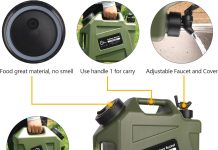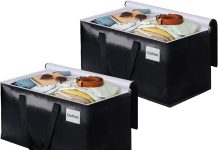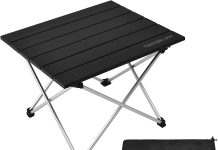Ladies and gentlemen, have you ever wondered about the mysterious item beneath our beloved camping shelters – the humble tarp under a tent? Today, we shall shed some light on this enigmatic accessory that plays a crucial role in our outdoor adventures. So, join us as we uncover the intriguing name and purpose of this oft-overlooked companion to our camping escapades.
Definition of a Tarp Under a Tent
When setting up a tent, you might have noticed a protective layer on the ground before placing your tent on top of it. This layer is commonly known as a “tarp under a tent.” The primary purpose of a tarp under a tent is to provide an additional barrier between the tent and the ground, offering extra protection against moisture and other elements that may seep through the tent floor. It is a waterproof shield that prevents water, dampness, and punctures from compromising your camping experience.
Importance of Using a Tarp Under a Tent
Using a tarp under a tent is crucial for various reasons. Firstly, it is a barrier against moisture, preventing water from seeping into the tent. Whether it’s a heavy downpour or morning dew, moisture is common in outdoor environments, and without a tarp, it can ruin the comfort and functionality of your tent.
Furthermore, a tarp under a tent protects the tent’s floor from sharp objects such as rocks, twigs, and thorns. These objects can easily puncture the thin material of a tent floor, rendering it less effective in providing shelter. Adding a tarp significantly reduces the risk of damage to your tent, thus prolonging its lifespan.
Additionally, a tarp under a tent provides extra insulation, helping to keep the inside of the tent warmer during colder weather conditions. The tarp acts as a barrier between the ground, which could be cold and damp, and the tent floor, providing an additional layer of protection against temperature fluctuations.
Materials Used for Tarps Under Tents
Tarps under tents are typically made from durable materials that can withstand the rigors of outdoor use. The most common materials used for tarps under tents include:
- Polyethylene (PE): PE tarps are widely used due to their affordability, waterproof nature, and resistance to UV rays. They are durable and can withstand rough terrains and weather conditions, making them popular among campers.
- Polyvinyl chloride (PVC): PVC tarps are known for their excellent waterproof properties and resistance to mold and mildew. They are often considered heavier duty than PE tarps and offer more excellent durability and longevity.
- Canvas: Canvas tarps are well-regarded for their breathability and strength. They are typically made from cotton or a cotton-polyester blend and offer excellent resistance to tearing. Although canvas tarps are heavier and may require more care, they are popular among campers seeking long-lasting and reliable protection.
Types of Tarps Under Tents
Several types of tarps under tents are available in the market, each with its specific features and purposes. Some common types include:
- Groundsheet Tarp: These tarps are designed to fit the exact dimensions of your tent and typically have attachment points that align with the tent’s setup. Groundsheet tarps protect the tent floor from damage and moisture, ensuring your tent remains clean and dry.
- Multi-Purpose Tarp: As the name suggests, multi-purpose tarps offer versatility and can be used for various camping needs. They are available in different sizes and can serve as a protective layer under your tent, a shelter above your tent for added rain protection, or a ground cover for picnics or lounging. These tarps provide flexibility and are a great option if you’re looking for a multi-functional camping accessory.
- Camping Footprints: Camping footprints are pre-cut tarps specifically designed to fit the floor dimensions of your tent. They are lightweight and compact, perfect for backpacking or minimalist camping. While camping footprints protect against moisture and sharp objects, they may not provide as much coverage as giant tarps.
Benefits of Using a Tarp Under a Tent
Using a tarp under a tent offers numerous benefits for campers. Here are some key advantages:
- Extended Tent Lifespan: Adding a protective layer between the ground and your tent reduces wear and tear on the tent floor, thus prolonging its lifespan.
- Improved Comfort: A tarp under a tent provides an additional insulating layer, making the tent floor more comfortable and warmer, especially during colder temperatures.
- Added Waterproofing: Tarps act as a reliable waterproof barrier, preventing water, moisture, and even condensation from seeping through the tent floor and compromising your camping experience.
- Enhanced Cleanliness: With a tarp under your tent, you can keep the inside of your tent cleaner, minimizing dirt, dust, and debris that might be present on the ground.
- Versatility: Depending on the type of tarp you choose, you can enjoy the flexibility of using it for various purposes, such as a ground cover, picnic mat, or additional rain shelter.
Size and Shape Considerations
When selecting a tarp for use under your tent, it’s essential to consider the size and shape that will best suit your needs. The tarp should be large enough to accommodate the entire footprint of your tent, providing ample room for setup and preventing any part of the tent from coming into direct contact with the ground.
Ideally, the tarp should extend at least six inches beyond the edges of your tent, ensuring proper coverage and protection. This extra coverage helps prevent water from pooling around the tent’s perimeter and seeping inside. Take accurate measurements of your tent’s dimensions before purchasing a tarp to ensure the perfect fit.
In terms of shape, tarps are commonly available in rectangular or square shapes, which are suitable for most tents. However, specific tent designs, such as those with vestibules or odd shapes, may require custom-cut tarps or groundsheet tarps specifically designed to match the tent’s unique shape.
Installation and Maintenance of a Tarp Under a Tent
Installing a tarp under a tent is a straightforward process. Before setting up your tent, lay the tarp on the ground, ensuring it is clean and free from any sharp objects or debris that could damage the tent floor. Position the tarp to align with the dimensions of your tent, with at least six inches extending beyond the tent’s edges.
Once the tarp is in place, set up your tent as usual, ensuring the tent floor is centered on the tarp. If applicable, secure the tent’s corners, attach the rainfly, and stake down the guy lines.
To maintain the tarp’s effectiveness and longevity, keeping it clean and dry is essential. After each camping trip, inspect the tarp for any signs of damage or wear. If any holes or tears are present, it’s essential to repair them promptly using a reliable patching kit or tape. Before storing, ensure the tarp is thoroughly dry to prevent mold or mildew growth.
Common Mistakes to Avoid with a Tarp Under a Tent
While using a tarp under a tent is generally beneficial, there are some common mistakes campers should avoid:
- Insufficient Size: Using a tarp smaller than the tent’s dimensions may expose areas of the tent floor, potentially allowing moisture or damage to occur. Always choose a tarp that provides sufficient coverage.
- Improper Positioning: Failing to position the tarp accurately under the tent can lead to water pooling around the tent’s perimeter or excessive exposure to sharp objects. Take the time to align the tarp properly before setting up your tent.
- Inadequate Securing: Neglecting to stake down the tarp or properly secure it under the tent may result in shifting or bunching during use. Secure all corners of the tarp and ensure it remains taut to maximize effectiveness.
- Insufficient Maintenance: Forgetting to inspect and clean your tarp regularly can lead to unnoticed damage or build-up of dirt and debris. Regularly check for any signs of wear and tear, clean it after each use, and store it properly when not in use.
Alternatives to Using a Tarp Under a Tent
While using a tarp under a tent is a popular choice, there are alternatives worth considering depending on your specific camping needs:
- Camping Mats: Camping mats are thick, moisture-resistant mats that can be placed directly under your tent. They offer similar benefits to tarps, such as insulation and protection against moisture and sharp objects. However, they may not provide as much coverage as tarps and are generally more expensive.
- Elevated Tent Platforms: Some camping sites offer the option of elevated tent platforms, which provide a built-in solution for keeping your tent off the ground. These platforms are typically made of wood or composite materials and help to keep the tent floor dry, eliminating the need for a tarp or groundsheet.
- Double-Floor Tents: Certain tents have a built-in double-layered floor, eliminating the need for a tarp under the tent. These tents feature an inner and outer floor, providing additional protection against moisture and damage. However, double-floor tents are usually more expensive and heavier than standard tents.
Conclusion
Using a tarp under a tent is a wise choice for any camping enthusiast. It is crucial in protecting moisture, sharp objects, and temperature changes that could compromise your tent’s effectiveness and comfort.
By selecting the right size and material, properly installing and maintaining the tarp, and avoiding common mistakes, you can enhance your camping experience and extend the lifespan of your tent.
Consider the benefits, materials, types, and alternatives discussed to make an informed decision when choosing a tarp for your next outdoor adventure. Happy camping!






































